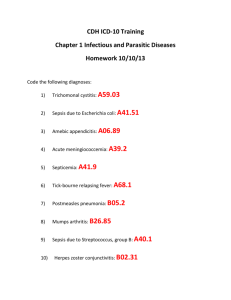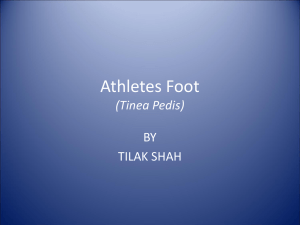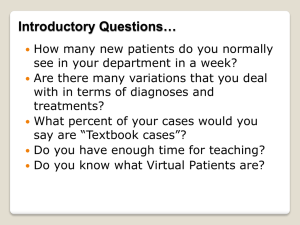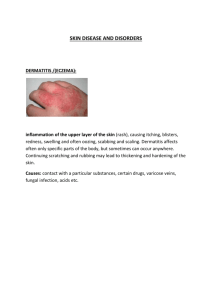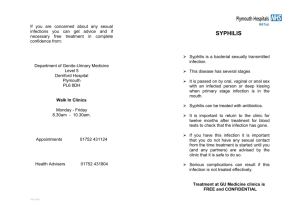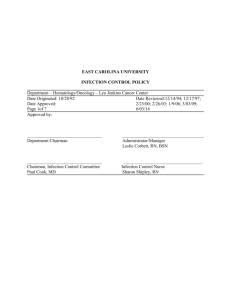Document
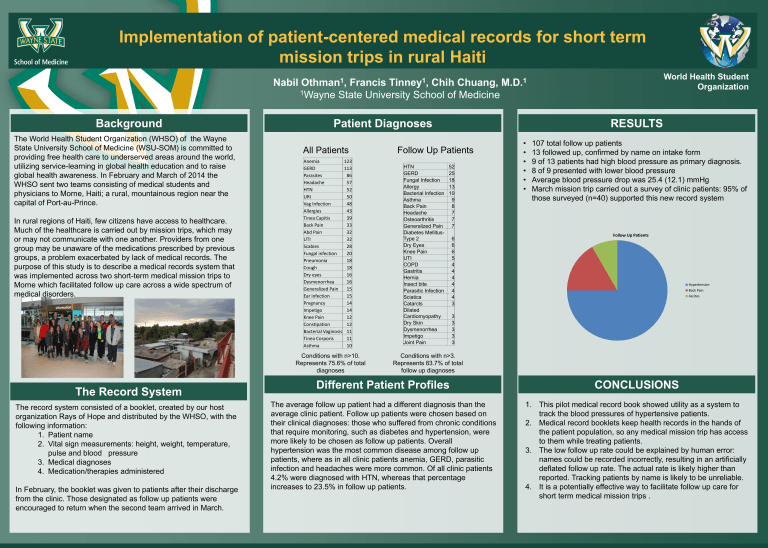
Implementation of patient-centered medical records for short term mission trips in rural Haiti
Nabil Othman
1
, Francis Tinney
1
, Chih Chuang, M.D.
1
1
Wayne State University School of Medicine
World Health Student
Organization
Background
The World Health Student Organization (WHSO) of the Wayne
State University School of Medicine (WSU-SOM) is committed to providing free health care to underserved areas around the world, utilizing service-learning in global health education and to raise global health awareness. In February and March of 2014 the
WHSO sent two teams consisting of medical students and physicians to Morne, Haiti; a rural, mountainous region near the capital of Port-au-Prince.
In rural regions of Haiti, few citizens have access to healthcare.
Much of the healthcare is carried out by mission trips, which may or may not communicate with one another. Providers from one group may be unaware of the medications prescribed by previous groups, a problem exacerbated by lack of medical records. The purpose of this study is to describe a medical records system that was implemented across two short-term medical mission trips to
Morne which facilitated follow up care across a wide spectrum of medical disorders.
The Record System
The record system consisted of a booklet, created by our host organization Rays of Hope and distributed by the WHSO, with the following information:
1. Patient name
2. Vital sign measurements: height, weight, temperature, pulse and blood pressure
3. Medical diagnoses
4. Medication/therapies administered
In February, the booklet was given to patients after their discharge from the clinic. Those designated as follow up patients were encouraged to return when the second team arrived in March.
Patient Diagnoses
All Patients
Anemia
GERD
Parasites
Headache
HTN
URI
Vag Infection
Allergies
Tinea Capitis
Back Pain
Abd Pain
UTI
Scabies
32
28
Fungal infection 20
Pneumonia 18
Cough
Dry eyes
18
16
43
39
33
32
123
113
86
57
52
50
48
Dysmenorrhea 16
Generalized Pain 15
Ear infection
Pregnancy
15
14
Impetigo
Knee Pain
14
12
Constipation 12
Bacterial Vaginosis 11
Tinea Corporis 11
Asthma 10
Conditions with n>10.
Represents 75.6% of total diagnoses
Follow Up Patients
HTN 52
GERD 25
Fungal Infection 18
Allergy 13
Bacterial Infection 10
Asthma 9
Back Pain
Headache
8
7
Osteoarthritis 7
Generalized Pain 7
Diabetes Mellitus-
Type 2
Dry Eyes
6
6
Knee Pain
UTI
COPD
Gastritis
Hernia
Insect bite
4
4
6
5
4
4
Parasitic Infection 4
Sciatica 4
3 Catarcts
Dilated
Cardiomyopathy
Dry Skin
3
3
Dysmenorrhea
Impetigo
Joint Pain
3
3
3
Conditions with n>3.
Represents 83.7% of total follow up diagnoses
Different Patient Profiles
The average follow up patient had a different diagnosis than the average clinic patient. Follow up patients were chosen based on their clinical diagnoses: those who suffered from chronic conditions that require monitoring, such as diabetes and hypertension, were more likely to be chosen as follow up patients. Overall hypertension was the most common disease among follow up patients, where as in all clinic patients anemia, GERD, parasitic infection and headaches were more common. Of all clinic patients
4.2% were diagnosed with HTN, whereas that percentage increases to 23.5% in follow up patients.
RESULTS
• 107 total follow up patients
• 13 followed up, confirmed by name on intake form
• 9 of 13 patients had high blood pressure as primary diagnosis.
• 8 of 9 presented with lower blood pressure
• Average blood pressure drop was 25.4 (12.1) mmHg
• March mission trip carried out a survey of clinic patients: 95% of those surveyed (n=40) supported this new record system
Follow Up Patients
Hypertension
Back Pain
Ascites
CONCLUSIONS
1.
This pilot medical record book showed utility as a system to track the blood pressures of hypertensive patients.
2.
Medical record booklets keep health records in the hands of the patient population, so any medical mission trip has access to them while treating patients.
3.
The low follow up rate could be explained by human error: names could be recorded incorrectly, resulting in an artificially deflated follow up rate. The actual rate is likely higher than reported. Tracking patients by name is likely to be unreliable.
4.
It is a potentially effective way to facilitate follow up care for short term medical mission trips .
